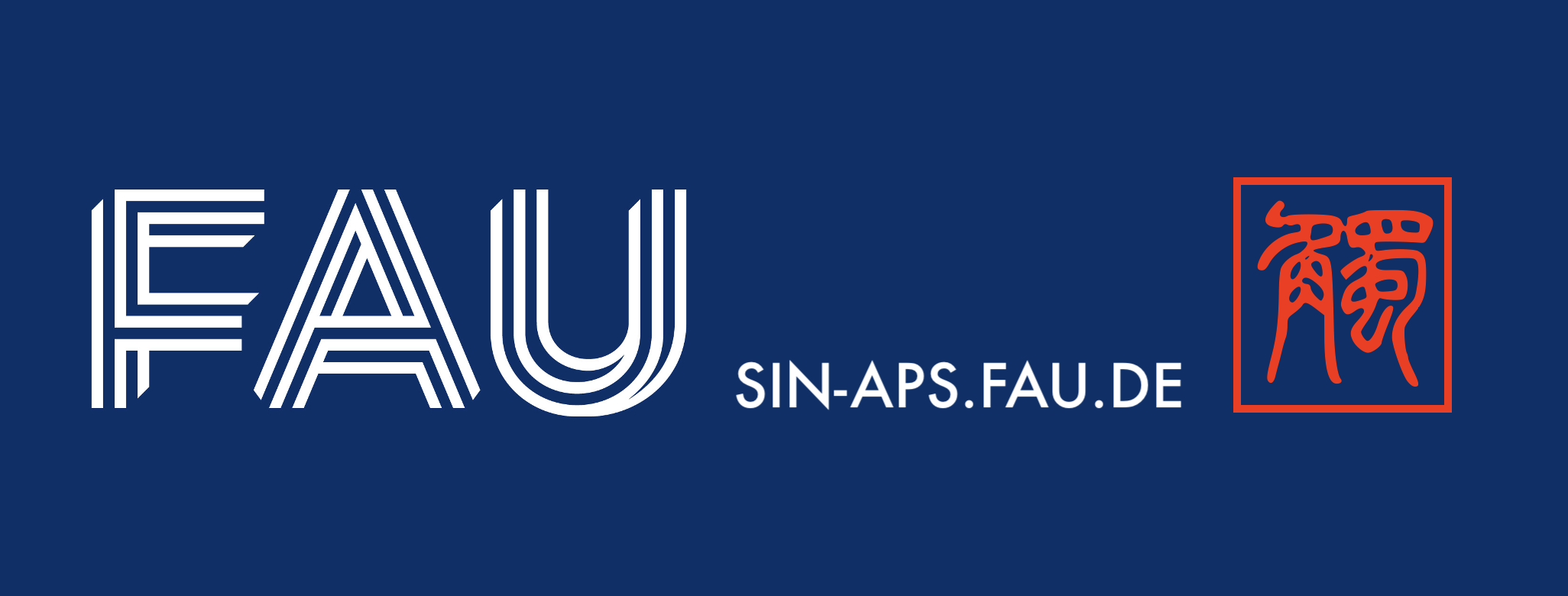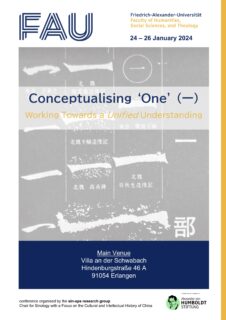Upcoming sin-aps Conference: Conceptualizing ‘One’ (一)
Conceptualizing ‘One’ (一): Working Towards a ‘Unified’ Understanding
Similar to many languages in the world, numbers display a variety of meanings in Chinese and other East Asian languages that borrowed the characters associated with them from Han China. As Marcel Granet (1934) who discusses numbers and their connection to the world order as perceived in Ancient China in great detail puts it: “A côté d’une valeur quantitative qui les distingue, […] les Nombres possèdent une valeur symbolique beaucoup plus intéressante. Ce sont des emblèmes. On leur attribue tout d’abord un véritable pouvoir descriptive.” [Next to a distinctive quantitative meaning, numbers have much more interesting symbolic value. They are emblems to which first and foremost a veritable descriptive power is attributed.] Granet demonstrates the emblematic, classificatory, and formal function (“une fonction protocolaire”) of numbers and their meaning for music or rites, for space and time; for their association to the order of the entire world in Ancient Chinese thought, highlighting aspects that distinguish the perception of number symbols (and perhaps symbolism of numbers) from other cultures.
It is not much of an exaggeration to claim that the number one (yī, 一) holds a special place among those already special emblems still. Unity, beginning, identity, indefiniteness – and this is only a fraction of what yī (ichi or hito in Japanese, il in Korean, …) can express next to its purely quantitative meaning – or perhaps meanings? While Granet chose to focus mainly on the non-technical semantics of the number one – even claiming that the idea of quantity did not play any role in philosophical speculations by the Chinese – he did mention the lack of a distinction between cardinal, ordinal, and distributive numbers in Chinese, stressing the intentional use of the former two senses of numeral symbols in treatises about cosmic harmony. We, however, want to take it one (or several) step(s) further: not only do we want to explore mathematical texts to shed light on cases where yī 一, even in technical literature, is not simply the number one as a measurement of quantity but we would also like to dive deeper into the different usages of yī. How was it used in poetry? Buddhist or Taoist texts? Philosophical commentaries? What about translations from other languages? And, just as importantly: how were neighboring cultures affected by the abundance of meanings as they borrowed the character along with its reading from China? What can be said in one language but not in another, and how do pre-modern and modern stages of those languages differ in this regard?
While we do not expect to find an all-encompassing answer to all those questions, we would still like to try and create a framework through which 一 may be looked at from different angles, and trace them back to their origins. In order to do so, we will focus on the examination of exegetic and linguistic aspects, mainly on syntax and semantics for Chinese and, in addition, morphology for Korean and Japanese. In any case, we consider it crucial to take a close look at the primary sources we are working with, and will therefore devote one slot of the conference to a shared attempt at analysis in the form of a reading session of various texts including, or even explicitly dealing with yī. This, we hope, will tie the different aspects that will be presented together and provide important insights into the highly complex interpretation of the number symbol “一”.
Prof. Gyburg Uhlmann, Founding Chair of the Department Liberal Arts and Sciences from the University of Technology Nuremberg (TUN), will be delivering the keynote address on “Unity and Number – Philosophical Approaches from the Liberal Arts in Antiquity”, thereby adding a comparative perspective from ancient Greek philosophy.
For a detailed program of the conference, see here.
Date: January 24-26, 2024 (3 days, Wednesday-Friday)
Location: Friedrich-Alexander-Universität Erlangen-Nürnberg
- Keynote: Schwarz-Weiß-Saal (0.026), Institut für funktionelle und klinische Anatomie, Universitätsstr. 19, 91054 Erlangen
- Conference venue : Villa an der Schwabach, Hindenburgstraße 46 A, 91054 Erlangen
Participation via ZOOM possible upon registration, please contact Valerie Kiel at valerie.kiel@fau.de.

